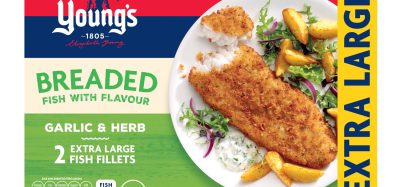Going green: Tuneable colloidal colour blends from natural colourants
- Like
- Digg
- Del
- Tumblr
- VKontakte
- Buffer
- Love This
- Odnoklassniki
- Meneame
- Blogger
- Amazon
- Yahoo Mail
- Gmail
- AOL
- Newsvine
- HackerNews
- Evernote
- MySpace
- Mail.ru
- Viadeo
- Line
- Comments
- Yummly
- SMS
- Viber
- Telegram
- Subscribe
- Skype
- Facebook Messenger
- Kakao
- LiveJournal
- Yammer
- Edgar
- Fintel
- Mix
- Instapaper
- Copy Link
Posted: 1 May 2014 | Ashok Patel, Vandemoortele Centre for Lipid Science & Technology, Ghent University | No comments yet
Food colouring plays a determining role in the manufacturing of food products because the appearance of products is very critical for attracting new consumers and influencing their food choices. Food colouring involves the use of food grade colourants that belong to one of three categories: synthetic, nature-identical or natural colourants (produced by chemical synthesis with structures similar to ones found in the nature).


Ashok Patel, Vandemoortele Centre for Lipid Science & Technology, Ghent University
This paper is a review of the original paper by Patel (A. R. Patel, P. C. M. Heussen, E. Dorst, J. Hazekamp, K. P. Velikov. Colloidal approach to prepare colour blends from colourants with different solubility profiles. Food Chem. 2013, 141, 1466), which is based on research conducted solely in the Unilever R&D center in Vlaardingen.
Colourants are often more desirable options due to their comparatively cleaner image among the common consumers. However, these natural and nature-identical colourants are notoriously susceptible to degradation in an aqueous environment triggered by external factors such as heat, light or pH changes. Furthermore, due to strict regulatory requirements in the food industry, there are only a limited number of colourants approved for food use. Hence, more often than not, to obtain the desired colour shade, food formulators have to rely on the blending of different colours together.
The three categories of colourants differ in their solubility characteristics, while natural colourants are mostly hydrophobic in nature, the colourants prepared by chemical synthesis route have comparatively better water solubility. Therefore, generating water dispersible blends of colourants with contrasting aqueous solubility could potentially lead to a better utilisation of natural and nature-identical colourants for obtaining newer and much more tuneable colour shades using approved colourants.
Green is one of the most desirable colours as far as consumer goods are concerned because as a colour it can be associated with the promise of being ‘natural’. Currently, chlorophylls either in their native forms or as copper complexes are the only known natural and nature-identical approved colourants for food applications. However, they are very susceptible to photo degradation and chemical degradation at acidic pH (pH ≈ 3.5-5). Since most food beverages have acidic pH, the use of chlorophylls for imparting green colouring in food formulations faces severe restriction. To address this issue, we have introduced a new concept where principles of colloid science are utilised to generate green colour blends based on the use of approved colourants with different solubility profiles.
A range of low pH stable green shades were generated by incorporating a natural yellow pigment and a nature-identical blue dye in protein-based nanoscale colloidal particles. Curcumin (Cur) and indigo carmine (IC) (Figure 2) are approved food colourants and are commonly used to obtain primary colour shades of yellow and blue respectively. It is common knowledge that many colourants interact with proteins via different non-covalent interactions including H bonding, ionic and hydrophobic interactions. Both Cur and IC are also reported to interact with proteins via hydrophobic and ionic interactions respectively. Thus, working on this hypothesis, both Cur and IC were incorporated in common colloidal particles based on dye-protein interactions to obtain different shades of green colour which are stable to chemical degradation at acidic pH and against photo degradation in presence of light.
Zein, a prolamin protein obtained from corn, was chosen as the protein to generate colloidal particles. Being a hydrophobic protein, it can be easily processed into nanoscale particles through solubility manipulation. In fact, zein has been extensively investigated as a starting material to create colloidal particles in nano and micro-scale ranges through simple anti-solvent precipitation techniques. The basic principle involves precipitation of zein from its molecular solution (usually aqueous ethanol solution) through the addition of a non-solvent (water). The addition of water results in decreased solubilisation capacity of the medium leading to the precipitation of zein in form of colloidal particles. The fact that zein, Cur and IC all show good solubility in ethanol was exploited to generate composite colloidal particles by simultaneous precipitation of zein with the colourants (Cur and IC). The final shade of colloidal dispersion can be tuned based on the ratio of Cur and IC used in the initial stock solution (Figure 1).
Different shades of colour in the yellow–green–blue range were generated by simply loading different ratios of Cur and IC in the composite particles with spherical shape and a mean particle size ranging from 176 – 300 nanometres (Figure 3). The stabilisation of these colloidal particles is achieved via a combination of electrostatic stabilisation, due to the positive surface change on zein particles resulting from ionisation of amino groups, and steric stabilisation contributed by the presence of a surfactant (Tween 80) layer around the particles.
Spectral data were collected to confirm the interactions of colourants with the protein-zein. Both Cur and IC absorb light strongly in the visible range at around 426 and 620nm respectively. On comparing the spectra of Cur and IC with that of colloidal dispersions (Figure 4), we observed a prominent hypochromic effect at 424 nanometres and bathochromic shift (from 611 to 619 nanometres) for Cur and IC respectively indicating interactions of dyes with protein zein. The incorporation of Cur (a strongly fluorescent dye) in the colloidal particles also resulted in a blue shift by 10 nanometres and also a prominent hypochromic effect in presence of IC (a weakly fluorescent dye) suggesting an interaction between the phenolic hydroxyl groups of Cur with the amino group of IC.
When crystalline components are co-precipitated in a colloidal particle matrix of protein, their crystallisation is often suppressed in the nanoscale confinement and possibly due to the amorphous complex formation with the protein in the particle matrix. Similarly, we observed that composite colloidal particles prepared via co-precipitation of crystalline Cur and IC in zein colloidal particles showed amorphous behaviour when investigated using X-ray diffraction (Figure 4); further strengthening our claim that there is an interaction between the colourants and the protein zein.
Further, the entrapment of pigments in colloidal particles resulted in the enhancement of the stability of both curcumin and indigocarmine towards photodegradation. Formulating a reactive species into colloidal form can significantly change its physical characteristics such as aqueous solubility which in turn determines its stability against light degradation in solution. In our case, since a small amount of colourants are loaded in the particles, these small molecules are embedded in the polymeric matrix of the particles that minimises their degradation caused by light in aqueous environment.
In summary, a simple concept of obtaining colour blends from a mixture of two colourants with different solubility profiles was successfully demonstrated. The colloidal approach was based on the incorporation of both curcumin (water insoluble) and indigocarmine (water soluble) in composite colloidal particles of zein. Different shades of green were generated by simply loading varying ratios of curcumin and indigocarmine in the composite particles with a mean particle size ranging from 76 – 300 nanometres. Since the approach is quite simple, it can be extended to other combinations of colourants too, and thus this finding can be viewed as an important step towards finding simple solutions to one of the long standing challenges of obtaining desirable blends for food colouring.
About the author
Professor Ashok Patel is a Marie Curie CIG Fellow who is currently leading the Vandemoortele Centre for Lipid Science & Technology at Ghent University in Belgium. After completing his PhD in pharmaceutical sciences, he joined Unilever R&D Vlaardingen, The Netherlands as a Marie Curie International Incoming Fellow to work in the area of food colloids. Working in this new field for the past five years, Professor Patel has published several papers, book chapters, technical articles and patent applications related to encapsulation, colloidal delivery systems and edible soft matter structuring. His current research is focused in the area of identifying novel routes to oil structuring including oleogelation and structured emulsions.









